What if your guitar rig wasn’t just a collection of gear, but a living, breathing collaborator—ready to unearth songs you didn’t even know you were capable of writing?
That’s the magic of Troy Van Leeuwen’s setup with Queens of the Stone Age. Each scarred guitar and Frankenstein’d pedalboard is more than signal chain—it’s a wellspring of sonic storytelling. When Premier Guitar caught up with him before a Boston soundcheck, we got more than a rig rundown. We stepped inside the workshop of a musical architect. Let’s explore how these tools do more than scream—they sing, whisper, and push songwriters far beyond their comfort zone.
In a Nutshell
- Key Point 1: Troy Van Leeuwen’s rig is designed to provoke creativity as much as sonic excellence.
- Key Point 2: His custom guitars, amps, and pedals serve as songwriting partners, not just performance tools.
- Key Point 3: Songwriters can harness similar creative intent in their setup by focusing on character and story.
Echopark Shark: The Deep-Diver of Alternate Tunings
The Echopark Shark isn’t just an instrument—it’s a sculptor’s chisel for melodies that live below the surface. Built in collaboration with Echopark’s Gabriel Currie over more than a decade, this De Leon model features a walnut bolt-on neck and a fascinating pickup combo: single-coil in the bridge, humbucker in the neck.

Tuned to C standard with heavy Dunlop .012–.058 strings, this axe dares composers to dig deep. Its lower tuning opens the emotional register—think brooding verses and gut-wrenching choruses. It grinds, it sighs, it breathes.
TVL’s RIY Jazzmaster: A Guitar with History in its Finish
There are pristine guitars, and then there’s the RIY: ‘Relic It Yourself.’ This first-of-its-breed signature oxblood Jazzmaster from Fender’s Custom Shop didn’t come pre-aged. It lived it. Van Leeuwen’s relentless playing seasoned it naturally—each nick and wear plate documenting gigs, ideas, and emotion.
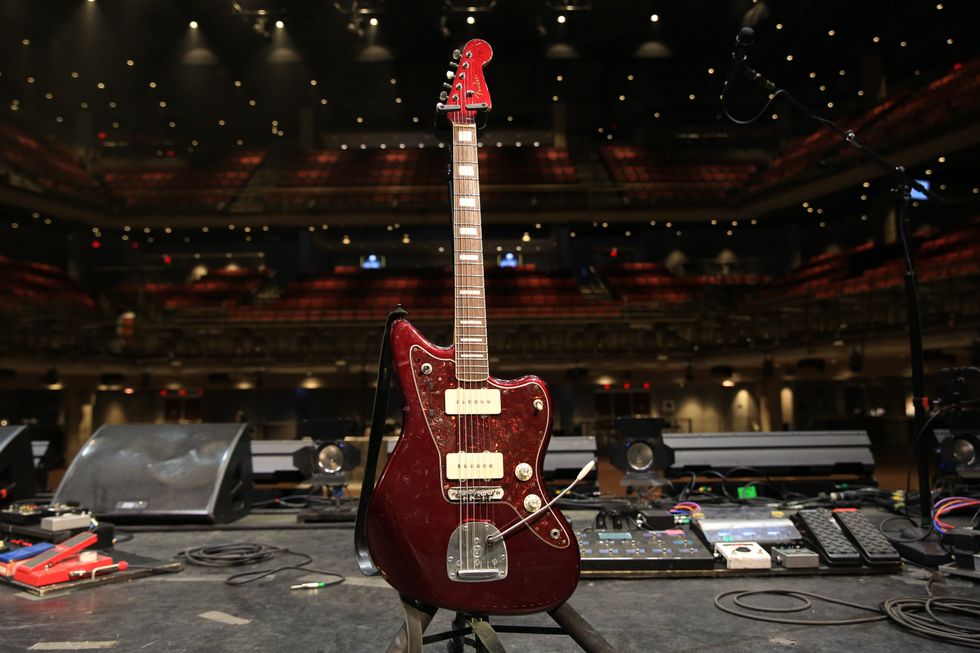
Outfitted with a Mastery bridge for impeccable intonation and dynamic response, this guitar becomes an extension of every flick, nudge, and swell. When you see the scars on it, you’re looking at a songwriter’s battle log. And it sings back in kind.
Double the Jazz, Double the Muse
Built by Paul Waller at Fender’s Custom Shop, this double-neck beast fuses two fantasy guitars into one folk-lore-grade creation. The lower deck features a classic Troy Van Leeuwen Jazzmaster; the upper deck blends Electric XII and Telecaster DNA.
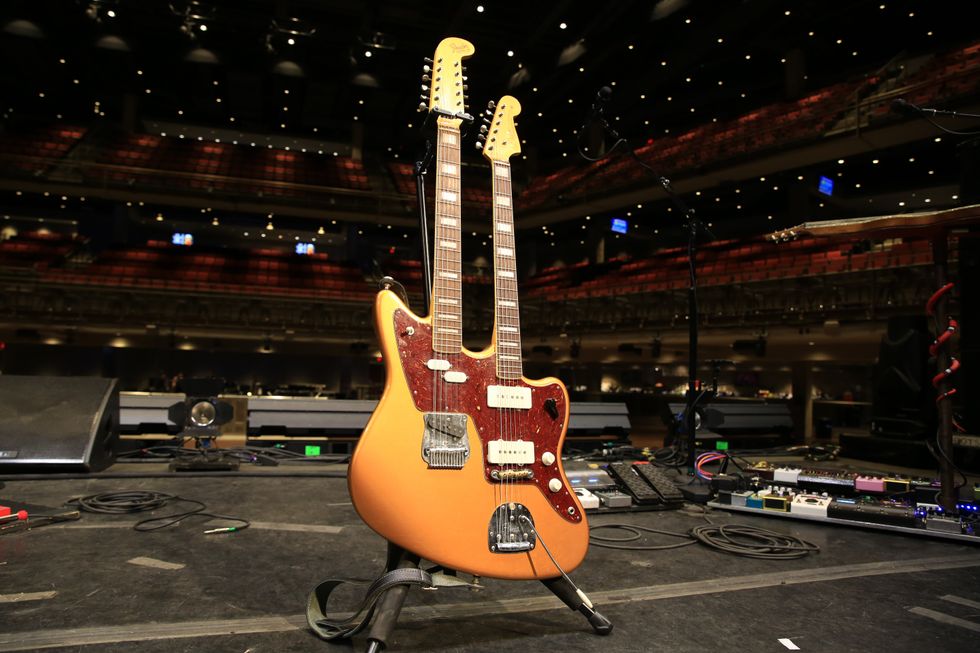
Why the overkill? Because option paralysis sometimes inspires magic. You might reach for a melodic motif on the 12-string neck that answers a question posed by the 6-string one. When tonal contrasts are built into the body of your instrument, complex compositions almost write themselves.
The ‘Exploiter’ and Shape-Shifting Guitars
The ‘Exploiter’ from Echopark combines the burst curves of 1980s shred guitars with aged elegance. It got a special relic job—saltwater from accidental sea exposure during an oceanic return gig. Talk about letting nature join your effects chain.
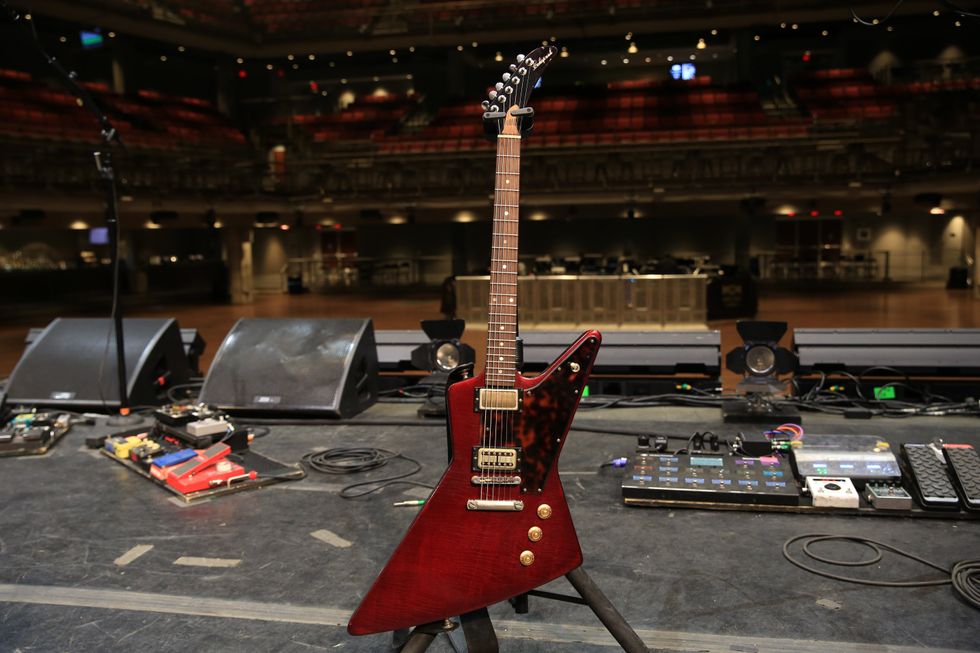
Also in Van Leeuwen’s case: a Teisco-inspired Echopark and a custom 12-string Tele from Fender. He’s expanding accessibility too, working with Squier on an affordable 12-string model. That opens up shimmer and jangle to new generations of songwriters.
Imagine the haunting vibrato of a salt-soaked Exploiter launching a surf-noir instrumental. That’s not just a tone—that’s a screenplay in sound.
The Amps That Shout and Murmur: GMI 33F6 and Vox AC30
Van Leeuwen’s amplification journey dances between vintage grit and pedal-friendly headroom. He co-developed the GMI 33F6 with Gabriel Currie and GMI’s Sean Romin. It combines a Marshall Jubilee-style preamp with a Fender-style power section—a blend of snarl and sparkle.
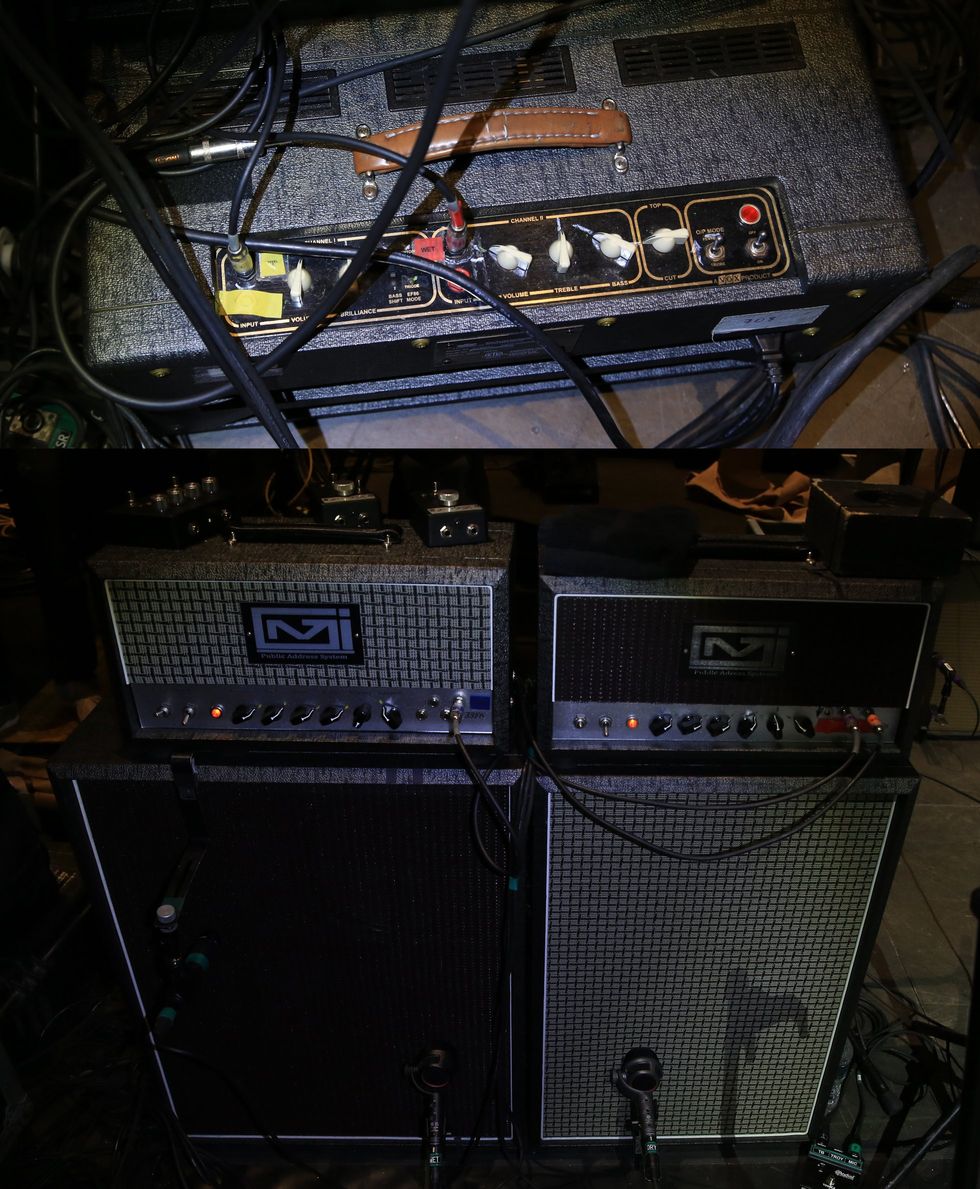
He uses two of these alongside a vintage Vox AC30, allowing for wet/dry stereo rigging. Paired with Austrian Audio condenser mics, each amp represents a tonal character in the song’s conversation.
The Pedalboard Playground
Van Leeuwen’s stompbox symphony begins with RJM Mastermind switchers (PBC/6X and GT/16) that ensure seamless routing. A Fractal FM3 and dual Eventide H9s offer digital versatility, while his menu of analog textures is a treasure chest.
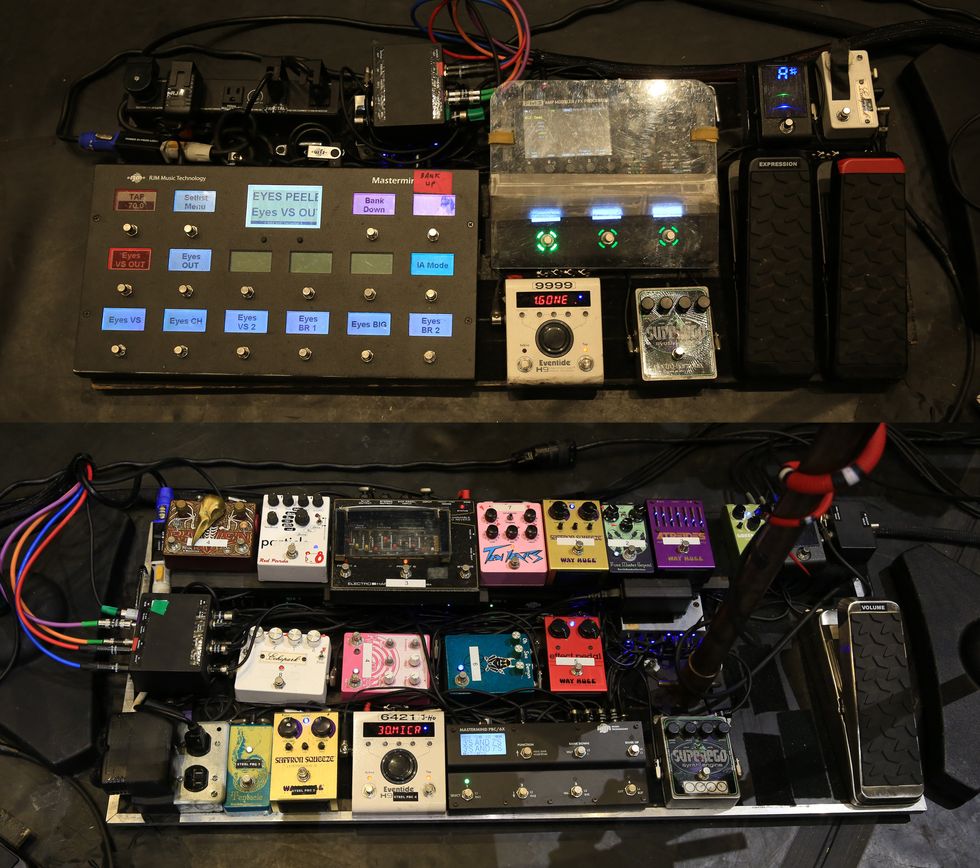

You’ll find Electro-Harmonix Superegos, Way Huge Saffron Squeezes, EQD Rainbow Machine, EHX Holiest Grail (modded), and the signature Dr. No TVL Raven. There’s elegance in chaos here—the glitches, warps, and delays acting as songwriting prompts, as much as effects.
One of Van Leeuwen’s go-to tactics: turn a knob to somewhere “wrong” and record the resulting mayhem.
Crafting Your Sonic Signature
Troy Van Leeuwen’s rig isn’t just enviable—it’s educational. It shows us that behind every rusted bridge, double-neck curiosity, or dripping fuzz pedal, there’s potential for a new song.
In building your own creative rig, don’t copy—curate. Choose not what’s popular, but what provokes you. Tune down, stack fuzz, fry delay settings. Let your gear misbehave, and it might just co-write your next masterpiece.
Because maybe the muse isn’t whispering in your ear. Maybe she’s humming through a busted speaker cone, waiting for you to listen.